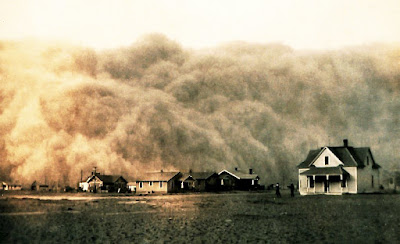About Haiku-like Poetry
by Rick Doble
These poems are quite personal and reflect my own interpretation of the Haiku form for my own poetic purposes. While I love traditional Haikus and also the new American and English language variations on the Haiku form, in my poems I am going to use my own ideas inspired by the Haiku genre.
MY OWN HAIKU-LIKE STYLE:
- A poem is often about a moment in time (see more below) -- with the exception of those I call 'thought' poems, observations about the human condition
- The number of words is about 20 - but can be more or less
- I generally do not use metaphors but describe real things
- Each poem has a distinct break in the middle - with a final idea/image that is juxtaposed against the beginning of the poem
- If possible I wait to reveal the full meaning of the poem with the last word or phrase
- I often write two or more related Haiku-like poems together -- ideally each one can stand on its own under the same title -- but together they are more powerful
- Micropoetry is limited to less than 140 or 160 characters -- a length which most of my poems meet
- I can break any of these general rules if the material demands it -- so some of my poems are much longer and don't follow all these guidelines
Although traditional Haiku is mostly about nature, my poems run the gamut from the atom bomb at Hiroshima to watching a thunderstorm in a McDonald's restaurant.
Like traditional Haiku I like to include both the time of day and the season of the year, if possible, but I just as often leave this out.
As I said, each poem is about a moment. Since I am a photographer as well, I often think of a Haiku-like poem as a snapshot of a moment, a moment frozen as in a photograph. It is one that draws on many senses and thoughts which are brought together and into focus at that point in time. Some of the moments I depict are 'mind moments' or 'aha' moments which are quite different from real moments in time.
Almost every one of my poems is about a real event in my life or a real event or events in history. Like photography, I believe anchoring my work to the real gives it added power.
I also changed the way English Haiku poetry has been laid out which, in the past, has been three lines. My long vertical layouts are actually closer to the original Japanese which were drawn vertically on a scroll.
In most poems I added pictures, which again is often a traditional way of printing and presenting poems in Japan. Since I am a photographer and also an editor of photography, I feel I can add a depth to my poems by the inclusion of imagery.
A Haiku poem in Japanese. (commons.wikimedia.org)
The short form has many advantages, both to the writer and the reader.
For the reader, it requires all of their attention but only for a few seconds. Yet that full attention is worth everything -- as it gives the poem room to breathe -- time for the full resonance of the images to be heard in the reader's mind.
Since the poems are short, a writer can write these in their head and revise them in their head. For people who are trying to balance work and art, this allows this art form to be worked on continually without upsetting the normal day-to-day work schedule.
This way of combining work and art has been successfully done in the past by the famous poet Wallace Stevens, for example, who composed "poems on his way to and from the office and in the evenings" while at the same time being a major executive at an insurance firm.
http://www.poets.org/poetsorg/poet/wallace-stevens
To see a full range of Haiku-like poems in English go to the following page which links to a large variety of these poems in a wide variety of forms and styles created by famous and virtually unknown writers:
http://terebess.hu/english/usa/haiku.html
VIEW OR DOWNLOAD OTHER POEMS
AND LITERARY WORKS BY RICK DOBLE
To see more of my poems, Haikus and literary works, you can view my eBooks online or download them as PDF documents at this web address:
https://independent.academia.edu/RickDoble/Literary-Works
PUBLISHED HAIKU POEMS
My Haikus have been published in:
The New Hope International Review, Cheshire, UK, Volume 20 #3.
and
black bough (publisher of Haiku and related poetry), Flemington, NJ, Issue Number Six.
POSTSCRIPT
I have always been passionate about poetry and felt that I could only say certain things at certain times using poetic language. Here is this idea in my own words:
Poetry is not just a way of writing,
it is the only way to say certain things.
Much more than a writing style,
poetry is its own language
which allows the writer to say things
only possible with/in poetry.
------------- And here is a similar idea by a famous English poet -------------
To be a poet is a condition rather than a profession.
Robert Graves
Haiku inscribed on a stone in Japan. (commons.wikimedia.org)
"Cut fish head on a golden rope (hung above a house as a defense against evil spirits).
With a poem." Caption and picture from commons.wikimedia.org








